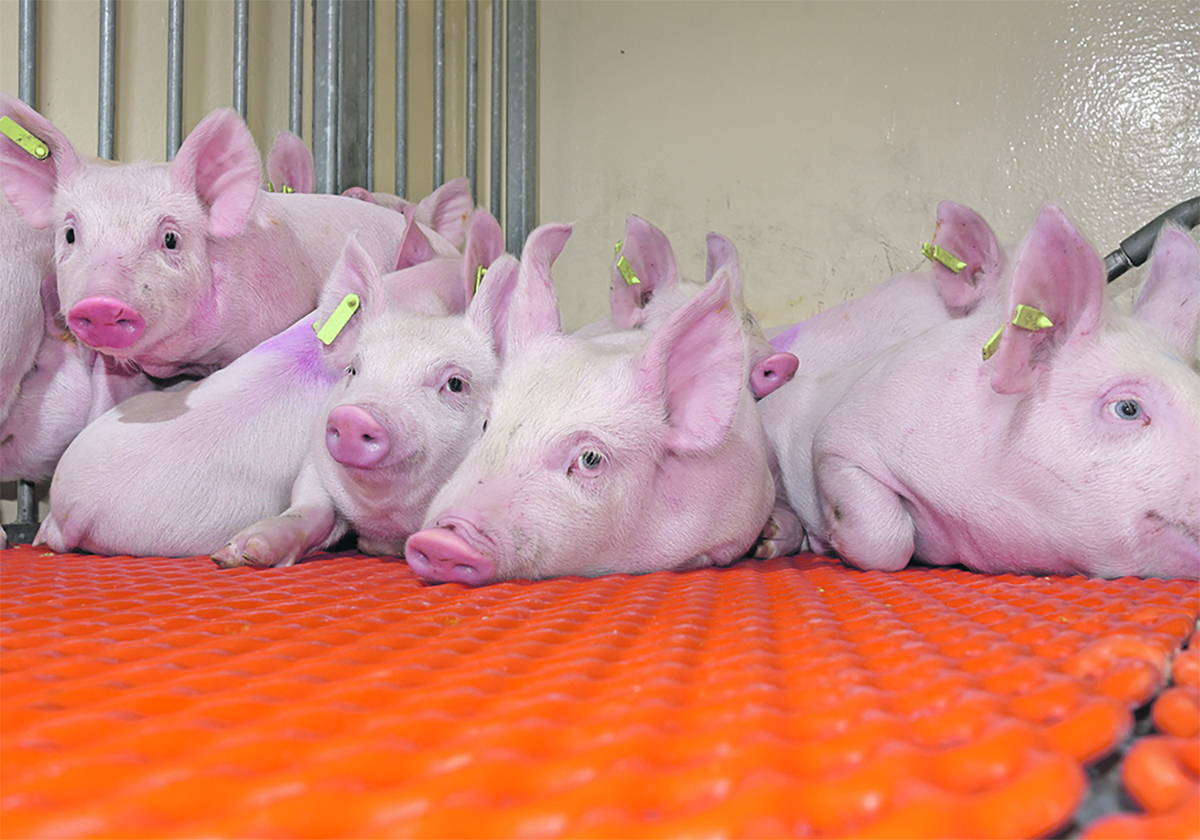Major COVID-19 vaccine funding has allowed the Vaccine and Infectious Disease Organization to expand its mandate
While COVID-19 has thrust Saskatoon’s Vaccine and Infectious Disease Organization into the spotlight, director and chief executive officer Volker Gerdts wants to assure livestock producers that it hasn’t forgotten its roots.
“We’re not changing our scope. We’re not changing our vision for the institute,” he said. “We’re not forgetting about livestock industries.”
As one of the foremost vaccine research and development institutions in Canada, VIDO has been the recipient of tens of millions of dollars in government largesse aimed at building capacity to combat present and future disease threats. This includes a COVID-19 vaccine candidate currently in clinical trials.
Read Also

The Western Producer Livestock Report: July 17, 2025
U.S. hogs averaged $106.69 on a carcass basis July 11, down from $110.21 July 4.
The most recent funding infusion, announced on April 19, earmarks $59.2 million in federal money to support vaccine development, expand research facilities and establish a National Centre for Pandemic Research.
Located at the University of Saskatchewan, VIDO was originally named the Veterinary Infectious Disease Organization, befitting its strong ties to the Western College of Veterinary Medicine when it was formed in 1975. Its name was changed to reflect a broader focus in 2003, coincidentally the same year the original SARS outbreak occurred (the virus that causes COVID-19 is named SARS CoV-2).
VIDO successes for animal agriculture include vaccines against calf scours and shipping fever in cattle, enteritis in turkeys and porcine pleuropneumonia in pigs.
One novel vaccine for cattle reduces incidence of a strain of E. coli. While the bacteria does no harm to the animal, E. coli from cattle was behind water contamination that sickened more than 2,000 and killed six in Walkerton, Ont., in 2000.
This illustrates the tight relationship between animal and human disease. The virus behind the current pandemic is suspected to be zoonotic — one that originated in animals. Gerdts said it’s estimated about 70 percent of new human diseases come from animal hosts.
All of this puts VIDO in a strong position to contribute to public health. For example, when SARS CoV-2 arrived, VIDO already had expertise on hand: Darryl Falzarano, who specialized in Middle East respiratory syndrome, a closely related coronavirus.
Gerdts explained the new funding allows VIDO to branch into new areas, working with animals from insects and reptiles to bats that can be reservoirs for diseases.
“It will enable us to focus on new problems and rapidly respond to them,” Gerdts said. “I say that purposely, ‘problems,’ because it’s not only new diseases but it could also be diseases for which there are new variants.”
Part of the pandemic centre strategy is to build close relationships with the livestock industry to identify the most pressing issues. Gerdts points out the VIDO board includes strong representation from the livestock industry. Also, money has been set aside for a full-time livestock liaison.
“It’s really somebody who goes to producer meetings, who can talk about what VIDO does, but more importantly I think, listen to the needs of the livestock industries to see what they want VIDO to do,” Gerdts said.
Andrew Van Kessel, associate director of research at VIDO, leads this part of the project. Researchers are exploring prevention and treatments for diseases such as Johne’s disease, tuberculosis, and mycoplasma lung infection in cattle. Programs are underway for most major swine diseases, including porcine reproductive and respiratory syndrome and porcine proliferative enteritis. Necrotic enteritis in poultry is also being looked at.
One high-priority project is African swine fever, which has devastated the pork industry in places like China. While it has yet to come to North America, Van Kessel said for the Canadian industry, which exports two of every three hogs it produces, it’s critically important.
“There will not be another pig leave the country as soon as we have a positive case,” he said.
VIDO’s ASF program has been looking, so far without success, for antigens, or parts of the virus that stimulate the immune system.
“We continue to look at different antigens and the opportunity to develop vaccines, or looking at the potential of antiviral approaches,” he said.
One of these is a “ring” treatment, where every animal around an infected herd is vaccinated or otherwise treated, creating a barrier to keep the infection from spreading further.
VIDO is also working with industry partners such as Alberta Pork, Manitoba Pork and Swine Innovation Porc to test and improve producer management.
After anecdotal reports that manure spreading on fields could be causing disease outbreaks in nearby swine herds, the researchers came up with protocols for how long the waste needed to sit in its lagoons before the pathogens were no longer active. In another study, it was found that the virus that causes porcine epidemic diarrhea could survive on transport truck trailer surfaces, even after treatment in giant “heat bays” designed for the purpose.
“With PED, it seems to survive longer in the heat,” Gerdts said. “So the recommendation to the industry was to actually increase or lengthen the baking time.
“That’s where our research comes in and provides the necessary information to them to change management practices.”

















